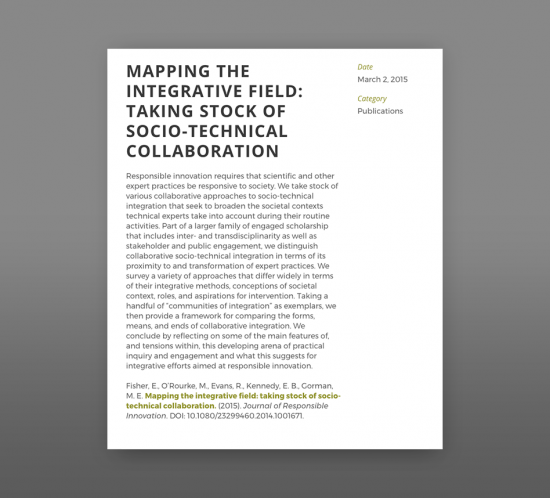A Pedagogical Model for Team-Based, Problem-Focused Interdisciplinary Doctoral Education
Interdisciplinarity is crucial for addressing the complex problems society faces. We present a model for educating doctoral students for careers involving interdisciplinary, team-based research to address problem-focused questions. The educational model is theoretically based and evaluated in light of the literature, faculty perspectives, and an













